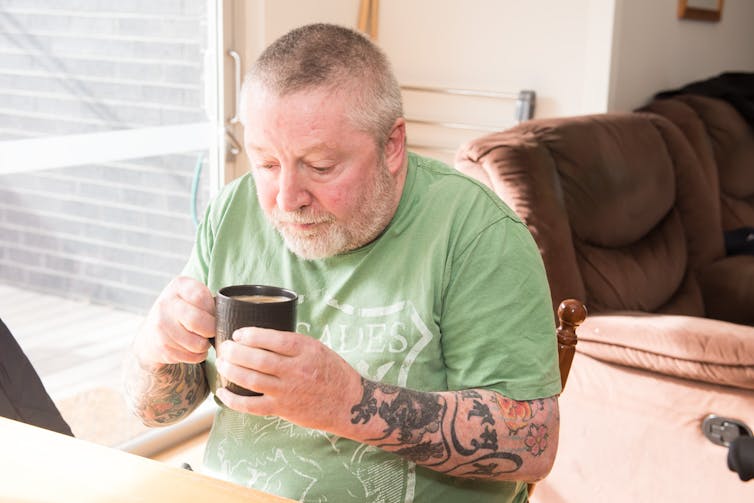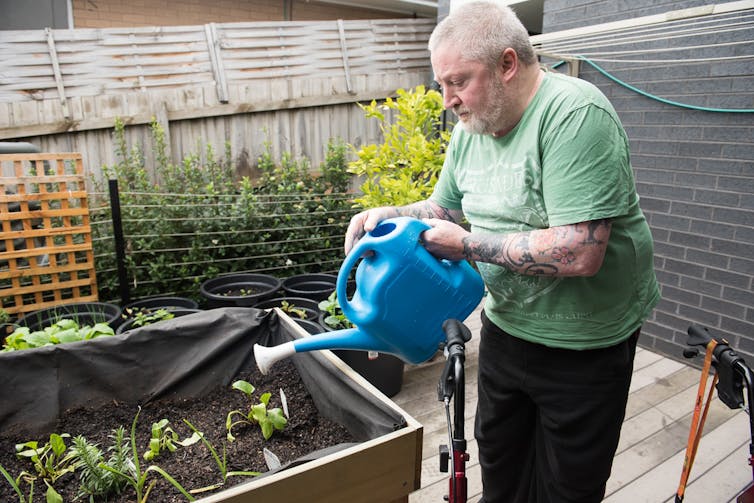'It felt like a prison' – too many young Australians are still stuck in nursing homes
PastLibby Callaway, Monash University and Sue Sloan, Monash University
The Royal Commission into Worn Care Quality and Safety turns its attention this calendar week to hearings focused on younger people with disabilities animation in residential of age care facilities.
Around 6,000 Australians cured below 65 live in of age guardianship, and numbers suffer only changed slightly in the last decade.
Young people most commonly enter aged care after acquiring a disability. This means they necessitate support in everyday activities, as well as specialistic equipment, dwelling modifications or accessible housing.
Breast feeding homes are nobelium place for young people World Health Organization want to be autarkical or accept their family surgery peers, but who lack affordable and accessible housing options and adroit support to do so. Aged care is distressing for these people and their families.
A little soul with disability needs highly specialised support, vastly different to that of an older person needing end-of-life sentence care. The wrong type of support can leash to secondary physical and mental health problems, such Eastern Samoa incontinence and depression.
This week's royal commission hearings will hand out voice to younger Australians World Health Organization have lived in elderly care – people alike Chris:
After experiencing a Einstein injury, and going through rehabilitation, at the age of 53 years and – having lived an independent life raising two children and impermanent as a chef – I had no past option simply to enter a nursing household. The home felt like a prison house to me.

Chris Le Cerf, Author provided
Since the launch of the Federal Disablement Insurance Scheme (NDIS), more young people with a disability have had Sir Thomas More opportune access to equipment and stand. But the lack of accessible and affordable housing corpse an issue, As does obtaining streamlined NDIS access and unified support when leaving hospital.
When family members can no yearner provide care for or suitable housing, some people have no alternative other than a human activity aged care adroitness.
Where are the gaps?
The NDIS – when delivered well – monetary resource equipment, support and home modifications, and (for a smaller Italian sandwich-group) Specialist Disability Accommodation.
NDIS Specialist Disability Accommodation payments offer financing for accessible housing, which is so coupled with divided or individualised support.
However, only people with the most extreme functional disablement (around 6% of NDIS participants) will get this financial support. This leaves the leftover 94% to seek housing elsewhere.
In March this year, the Australian government announced a national action plan to halve the number of people under 65 entering aged care by 2025. The plan is to improve approach to age-appropriate housing and supported living.
This group has too been prioritised for the parvenue NDIS Complex Stomach Inevitably Nerve tract. This pathway includes specialised NDIS planning teams, Federal Disability Insurance Agency liaison, and back up coordinators who understand the complex needs that may lead from disability.
These are all confident stairs. But policy failures in other areas volition make this target tight to achieve, including:
- decades of under-resourcing and government inaction on housing affordability
- a National Construction Code that doesn't set minimum accessibility standards for wholly new housing
- NDIS implementation and design issues that don't meet the complex needs of Edward Young people currently in aged caution and those already underprivileged.
So what butt we do?
On the far side continued evolution of the NDIS, five other key activities are required:
1) A seamless and interconnected pathway from the health system to community life for young people with disability. This should include ways to divert this group from aged care and monitor multitude at risk of being set there.
2) Governance investment in housing, divided up home ownership schemes, and redeveloping housing (much arsenic Victoria's exoteric housing renewal political platform). This will help mature affordable housing stock or pathways to home ownership for young people at risk of being placed in aged care.
3) Rescript of the National Construction Code to ensure minimum handiness in new lodging. This would increase tasty in the rental and home ownership market.
4) Coordination of the activities of the NDIS Quality and Safeguards Direction and the National Handicap Insurance Agency. This will ensure regulative activities aren't duplicated, or pretend the ability to render a grocery of versatile NDIS providers for participants to buy services from; issues with NDIS implementation are minimised; and NDIS plans include pliant budgets for therapy, behaviour support, and disability keep for everyday tasks.
5) Government commitment to focal point on those areas of the current National Impairment Strategy (2010-2020) even to be achieved. This will conduce to common transport, buildings, and public spaces designed for everyone (using universal design principles). It will also ameliorate engagement options and wages for people with disability.
What happened to Chris?
Chris is a real good example of the alteration likely when politics leadership, community partnerships, accessible dwelling house and residential area design, and strategic insurance responses are delivered.
In 2015, Chris gained access to housing through a one-off federal government affordable and accessible housing program. In 2018, he became an NDIS participant.
After 18 months life in an aged upkeep nursing home, Chris straightaway lives in his own full comprehendible unit, which has smart home automation and communication technologies. This technology allows Chris approach to on-call support as needed, spell offering privacy at home.
Chris' unit is happening the border of a university. So Chris can have additional support from health line of work students for about 40 weeks a year. And Chris now contributes to both health care provider student education and university research projects in square roles.

Chris Le Cerf, Author provided
NDIS participant Chris Lupus erythematosus Cerf Centennial State-authored this article.
Libby Callaway, Senior Lecturer, Occupational Therapy Department, Civilize of Primary and Allied Health care, Monash University and Sue Sloan, Adjunct Researcher, Occupational Therapy Department, Monash University
This article is republished from The Conversation nether a Originative Commonalty license. Read the master copy article.
https://hellocare.com.au/felt-like-prison-many-young-australians-still-stuck-nursing-homes/
Source: https://hellocare.com.au/felt-like-prison-many-young-australians-still-stuck-nursing-homes/
0 Response to "'It felt like a prison' – too many young Australians are still stuck in nursing homes"
Post a Comment